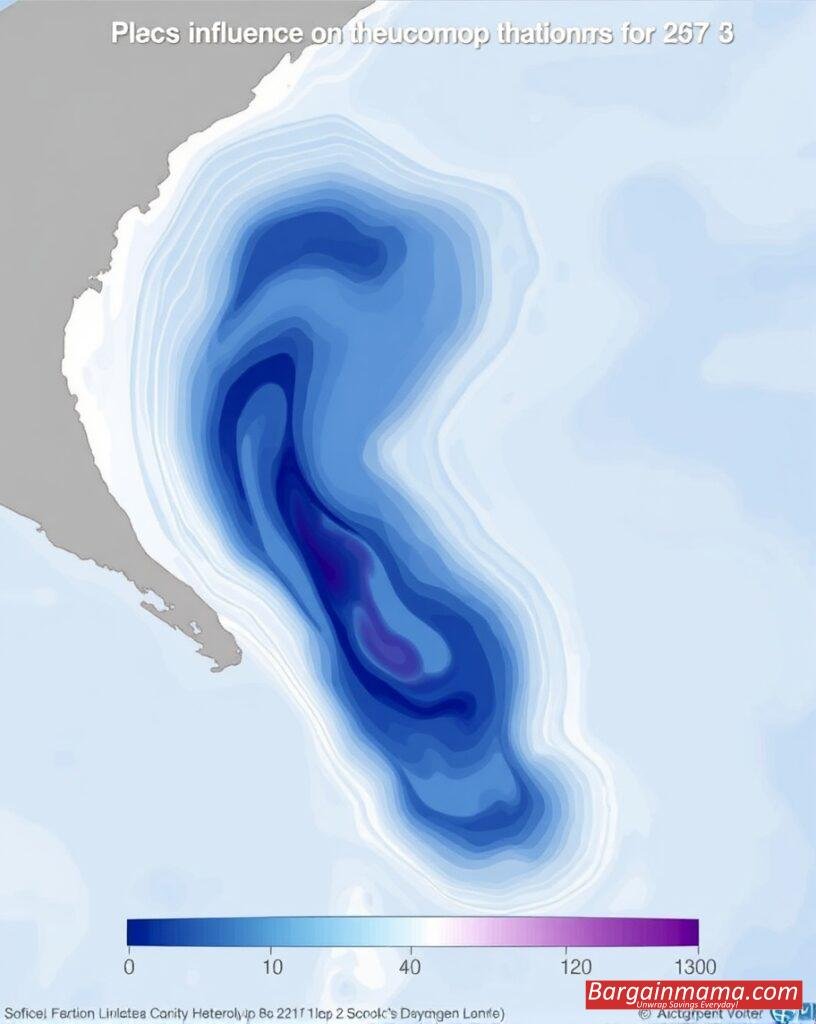As autumn approaches, meteorologists are turning their attention to the winter forecast, with a weak La Niña pattern expected to play a significant role. This shift from last year’s El Niño-dominated weather could bring notable changes across the United States, affecting temperatures, precipitation, and snowfall patterns.
La Niña: An Overview
La Niña is a natural climate phenomenon characterized by cooler-than-average sea surface temperatures in the equatorial Pacific Ocean. This pattern typically has its strongest influence during winter in the Northern Hemisphere, often causing shifts in global weather patterns. It’s the counterpart to El Niño, which brings warmer ocean temperatures and was responsible for last winter’s milder conditions and reduced snowfall in many parts of the U.S.

La Niña’s presence tends to alter the jet stream’s behavior, a high-altitude air current that guides storm movements. During La Niña events, the jet stream often shifts northward, resulting in colder, wetter conditions in some areas and warmer, drier weather in others.
Predictions for the Coming Winter
The Climate Prediction Center (CPC) estimates a 60% chance of La Niña developing by November and lasting through winter into early spring. However, it’s expected to be a weak La Niña, which means its impact on winter weather may be less pronounced and more susceptible to influence from other weather patterns.
Emily Becker, an atmospheric scientist at the University of Miami, emphasizes that the strength of La Niña is crucial in determining its effects. Stronger La Niña events generally have more predictable impacts, while weaker ones leave room for other climate phenomena to shape the weather.
Early CPC forecasts suggest typical La Niña conditions, with the jet stream steering storms and cold weather more towards the northern U.S., while leaving southern regions warmer and drier. However, given the expected weakness of this year’s La Niña, these predictions may show more variability as the season approaches.
Regional Weather Expectations
While each La Niña winter is unique, they often share common trends:
- Pacific Northwest and Northern California: Expect cooler and wetter-than-normal conditions, potentially leading to increased mountain snowfall. This could benefit the region’s water supply and winter tourism.
- Midwest and Plains: Near-normal temperatures with increased precipitation are likely, potentially alleviating drought conditions and bringing some snowy weather.
- Northeast: More precipitation is expected, but warmer-than-normal temperatures might result in less snow overall. Mild temperatures could lead to more rain than snow during winter storms.
- Southern U.S.: Typical La Niña patterns bring drier and warmer conditions to the South. Drought conditions may worsen, particularly in Southern California, where an extended wildfire season is possible without significant rainfall.
Snowfall Predictions
While northern regions are expected to see more precipitation, this doesn’t guarantee increased snowfall. Temperatures need to be cold enough for snow to form and accumulate, which can vary even within a La Niña winter.
Weak La Niña events, like the one forecasted, tend to favor more snowfall in the Northeast. However, current CPC temperature forecasts show warmer-than-normal conditions for much of the East Coast, which could result in more rain than snow. The forecast may change as La Niña’s strength becomes clearer in the coming months.
Wildfire Risks
The dry winter typically associated with La Niña raises concerns about wildfire risks in Southern California and other southwestern U.S. regions. Without significant rainfall, the wildfire season could extend into winter, posing ongoing threats to communities already dealing with abundant dry vegetation.
Conclusion
While this winter’s weak La Niña is not expected to bring extreme conditions, its influence will be felt across the U.S. The northern regions are likely to experience wetter and cooler conditions, while the South may see warmer and drier weather. Snowfall patterns may shift compared to last year’s El Niño-dominated season. As winter approaches, updated forecasts will provide more clarity on what to expect, particularly as La Niña’s strength becomes more apparent.



